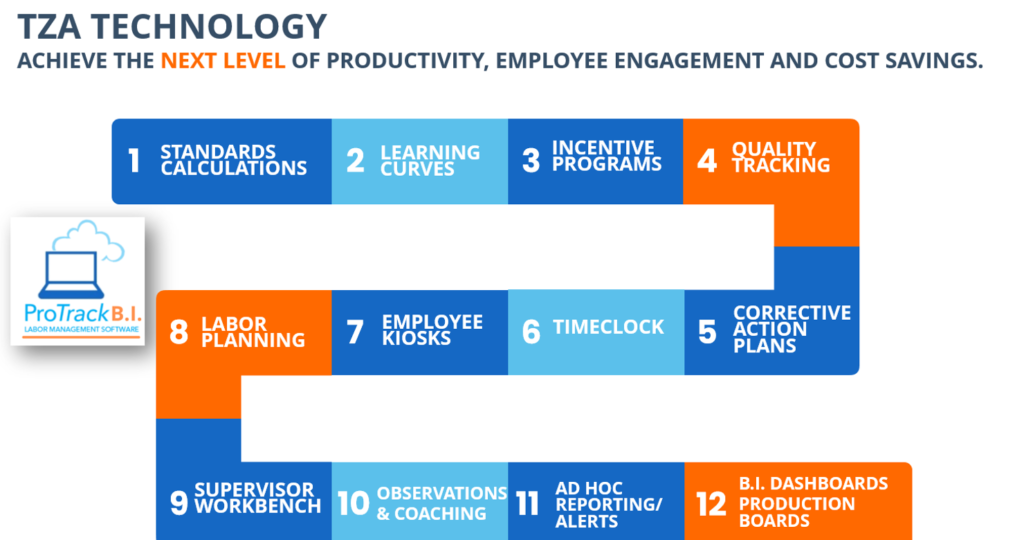COVID-19 has drastically reduced the workforce by 4.5 million in November alone quitting their job. See the Labor Department’s latest Job Openings and Labor Turnover Survey.
E-commerce demand has significantly increased, resulting in a wider variety of SKUs combined with smaller order sizes that require more people to support logistics than ever before. Order-picking has always been labor-intensive e-commerce has just made it more so!
According to a recent McKinsey report, the US e-commerce growth rate in 2020 rose 3.3 times faster than the average growth from 2015 to 2019. The report affirms that the “shift to digital transactions has propelled growth in delivery, transportation, and warehouse jobs.” This impact manifests through high turnover, reduced performance, and unpredictable operations requiring more and more overtime and excess costs to achieve business goals.
To combat retention and attract new hires, companies are offering higher wages, read TZA’S TOP TIPS FOR NAVIGATING LABOR SHORTAGES. But all signs point to this being a short-term solution to a long-term problem. Strategic labor management lies in creating an ongoing cycle of raising productivity that positively affects your workforce. The use of Labor Management System Software is vital in achieving this goal.
Tier 1 Labor Management System Software
The use of Labor Management System Software which includes a host of real-time floor management tools such as labor planning, learning curve management, coaching, and more, is the best way to assure you are proactively and fairly managing your associates to their highest performance levels. But buyers beware; not all Labor Management System Systems are created equal. To become an employer of choice in a tight labor market, you need a Tier 1 Labor Management System System that at a minimum offers the following 12 functions:
Labor Management System System Checklist:
Standards Calculations:
Calculate multi-determinant standards, specifically travel distance and time allowed, enabling you to represent all the activities and process variations in your warehouse. Expanding from a single determinate to a multi-determinate can help you capture up to 5-8 percent more throughput in typical warehouse activity.
Learning Curves:
Use defined learning curves by activity to assure that your standards are fair to new associates while they gain experience, offering an introduction to the performance management program and confidence that site leadership is defining a culture that allows them to grow into a role.
Incentive Programs:
Deploy standards-based incentive programs to help you affordably bridge the wage gap and increase employee retention. Instead of increasing wages across the board, tailor the benefits to those that put in more effort, defining a performance culture in your warehouse.
Quality Tracking:
Measure and manage labor performance to increase productivity order accuracy. Tracking and following this data allows your continuous improvement teams to stamp out the source of qualities issues, be it processes or people.
Corrective Action Plans:
Correct and resolve employee performance problems to retain the employee as a productive staff member. Engage with the right resources, at the right time with the right approach to maintain a healthy working environment
Timeclock:
Accurately represents when and where employees are working allowing optimization of their impact. Timeclock helps businesses without a time and attendance system heel-to-toe tracking that enables performance and predictability in their operations.
Employee Kiosks:
WMS or other host systems do not track all activities. Employee kiosks ease the complexity of the daily punch-in process and can provide updates to employees on current performance against set metrics. They also streamline supervisor tasks by allowing resources to self-declare delays or other time events impacting the process.
Labor Planning:
Allows you to use your historical execution as a basis for planning the future. Labor planning enables you to determine labor requirements by business area and intelligently assign the most qualified resources to result in the least cost execution strategy.
Supervisor Workbench:
Gain a clear picture of where you are, where you have been, and where you should go with drillable dashboards. Dashboards deliver comprehensive, configurable views to supervisors with all the information needed to manage the day. See top-level approvals as needed and drill down into any individual or aggregate view as required.
Observation and Coaching
Focus your supervisors’ coaching efforts on those that need it the most. Set up alerts for managers to identify individuals who may need assistance in achieving the minimum performance expectations and deliver a coaching session customized to help them get back on track.
Ad hoc Reporting/Alerts
Provide specific, filtered custom reports to drive your continuous improvement efforts. Provide your team the ability to make educated decisions based on real-time information.
BI Dashboards and Production Boards
Align your team with the KPIs that matter most. Leverage advanced data filters using real-time information and long-term history to create visual dashboard reports for business insights.
What to expect from Tier 1 Labor Management System Software
As a general rule of thumb, with Labor Management System Software alone, you can expect 10-20% gains in productivity. When performance pay is applied, improvements can be in the range of 25-50%. If you’re interested in seeing how much your organization can save per year with Labor Management System Software, check out the TZA COST SAVINGS CALCULATOR.
With over 35 years of expertise in labor management engineering and technology, TZA has developed the solutions and expertise you need to adopt continuous improvement and achieve a competitive advantage. Stay tuned for our next post, where we’ll highlight the latest enhancements to ProTrack, the industry’s leading Labor Management System System, that will set you on the course for increased retention, reduced overtime and increased productivity in 2022.
Schedule a demo to see what ProTrack LMS and ProTrack BI can do for you.
Check out the full B.I Series on the case for a Labor Management System System with Business Intelligence
Reach out to us to learn more about our Labor Management System Services that can help you assess performance, establish best practices, and manage performance standards.
Call TZA and speak to our Labor Management System team to discuss your challenges. (800) 229-3450.


